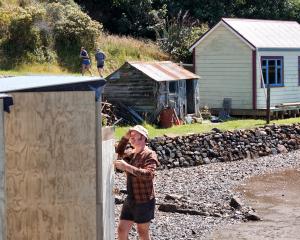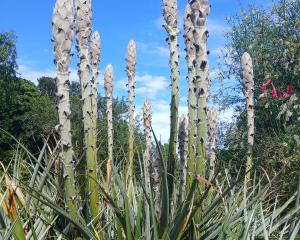The spring flower show season is getting under way, with daffodils a top attraction. Gillian Vine reports.
Spring bulbs are one of the joys of southern gardens, starting with snowdrops, then crocuses and reticulata irises but it's daffodils that dominate.
As Otago Daffodil Group chairman and judge Ron Abernethy says, there are thousands of varieties grown in Otago, which has ''an ideal climate for daffodil culture''.
The best place to admire daffodils or choose new varieties is at a flower show and over the next few weeks there are at least half a dozen to choose from, depending where you live.
Mr Abernethy says that the cooler, wetter conditions over the past two months should provide excellent daffodils this year at shows around the region and also in the home garden.
The Dunedin Horticultural Society's (DHS) spring show on September 26-27 will feature a special display of daffodils.
Arranged by DHS and Otago Daffodil Group (ODG) members, this will be in addition to the hundreds of daffodils entered in the show's competitive classes.
Whereas the competitive section is expected to attract hundreds of newer varieties bred for exhibition, the special display will include many older types closely related to the wild forms from Europe, and which grow well in Otago.
Society members will be on hand at the daffodil display throughout the weekend to give information on daffodil types, unveiling the mysteries of classifications such as 2WW.
Care and cultivation will also be covered, as well as an outline of the work of the ODG.
In addition to daffodils and the usual line-up of hundreds of spring blooms, the DHS show will feature dozens of floral art entries, a section in which there have been record entries at recent shows.
Looking at floral art entries, it is easy to appreciate the work that goes into presenting them, but few realise the efforts other exhibitors make to stage flowers and vegetables so they look their best for the judges. Before being picked for showing, flowers may need protection.
Picking may be done days ahead of a show, with only a handful of the best making it to the show venue, as a winner has to have that special something.
Mr Abernethy says a top-notch daffodil should ''look you in the eye'', meaning the bloom should face outwards.
To achieve this, before the show some people put a collar around the neck of the flower to gently force it into the correct position.
This may also help blooms travel better if they are to be transported long distances.
When the flowers are put into vases for judging, it is common to see exhibitors gently brushing petals with a fine, soft brush to remove traces of pollen.
At summer shows, this is de rigueur for those showing lilies, which tend to spray brownish pollen on otherwise perfect petals.
If that sounds like a lot of work, consider the efforts some vegetable growers will go to in an effort to win the coveted red card.
A grower explained to me recently how the leeks I was admiring at a vegetable show in South Wales achieved their incredible size and perfect shape.
The white part of each leek was 50-55cm long and as thick as my arm, with the leaves, left untrimmed, about 55-60cm long.
To grow them - and the amazingly long, but rather skinny carrots and parsnips - a competitor will sink a pipe into the ground, fill it with high-quality soil and sow three seeds.
When they germinate, only the best seedling is retained and nurtured until just before the show.
The pipe is lifted and broken open, care taken not to damage the precious root.
The leek, carrot or parsnip is washed gently before being taken to the show.
As each entry has to be of three specimens, enormous effort goes into selecting a trio as near identical as possible.
If that sounds daunting, don't let it put you off showing.
There are always people on hand to help explain what to do, and take heart from the tale of the Gore woman who was encouraged to enter her local show for the first time.
She grabbed a few daffodils from her garden, took them to the show, and one was named supreme bloom of the day.
It could be you.
On show
Some of the spring flower shows coming up are. -
• September 18: Maungatua Church Flower Show, Outram Church hall, Holyhead St, Outram; open 1-5pm.
• September 18: Waikouaiti Community Spring Flower Show, Waikouaiti Presbyterian Church hall, Kildare St; open 2-5pm.
• September 26-27: Dunedin Horticultural Society Spring Show, Forbury Park Raceway, Victoria Rd, Dunedin; open Saturday 2-5 pm, Sunday 10am-4pm.
• September 27: Blueskin Garden Club spring flower show, Waitati Hall; open 11am-3.30pm.
• Weekend, September 26-27: North Otago Horticultural Society Spring Flower Show, Scottish Hall, Oamaru. Saturday 2pm-4pm, Sunday 10am-4pm.
• October 2: Balclutha Garden Club Spring Flower Show, Memorial Hall, Clyde St, Balclutha; open 1-5pm.
• October 2-3: Te Anau District Spring Flower Show, Te Anau town hall.












